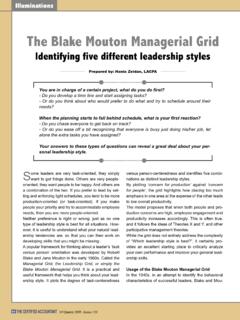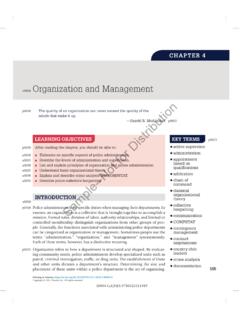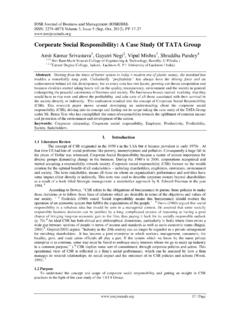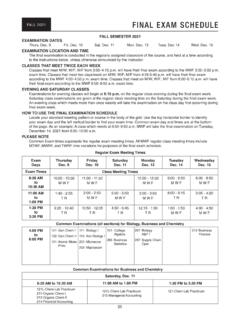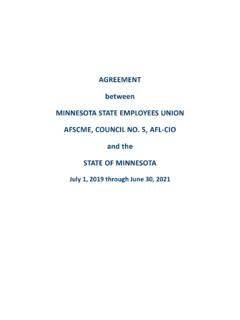Transcription of DOUGLAS MCGREGOR: THEORY X AND THEORY Y.
1 All rights reserved. No part of this publication may be reproduced in a retrieval system, or transmitted, in any form or by any means, electronic, mechanical, photocopying, recording or otherwise, without the prior permission of the publisher. DOUGLAS MCGREGOR: THEORY X AND THEORY Y. Thinker 026 INTRODUCTION DOUGLAS McGregor (1906-1964) followed a mostly academic career lecturing at Harvard University, Massachusetts Institute of Technology (MIT) and Antioch College, becoming the first Sloan Fellows Professor at MIT. Although, because of his early death, he wrote only a few publications, they have had a great impact.
2 In 1993 McGregor was listed as the most popular management writer alongside Henri Fayol (Andreas Huczynski, Management Gurus - What Makes Them and How To Become One). Major American writers, such as Rosabeth Moss Kanter, Warren Bennis and Tom Peters, whose writings have much influence on current learning and practice, agree that much of modern management thinking goes back to McGregor, especially the implications of his writing for leadership. KEY THEORIES Summary McGregor believed that managers' basic beliefs have a dominant influence on the way that organisations are run. Managers' assumptions about the behaviour of people are central to this.
3 McGregor argued that these assumptions fall into two broad categories - THEORY X and THEORY Y. These findings were detailed in The Human Side of Enterprise, first published in 1960. THEORY X and THEORY Y describe two views of people at work and may be used to describe two opposing management styles. (See Related model). THEORY X: the traditional view of direction and control THEORY X is based on the assumptions that: 1. The average human being has an inherent dislike of work and will avoid it if possible. 2. Because of this human dislike of work, most people must be coerced, controlled, directed, and threatened with punishment to get them to put forth adequate effort toward the achievement of organisational objectives.
4 3. The average human being prefers to be directed, wishes to avoid responsibility, has relatively little ambition, and wants security above all. A THEORY X management style therefore requires close, firm supervision with clearly specified tasks and the threat of punishment or the promise of greater pay as motivating factors. A manager working under these assumptions will employ autocratic controls which can lead to mistrust and resentment from those they manage. McGregor acknowledges that the `carrot and stick' approach can have a place, but will not work when the needs of people are predominantly social and egoistic. Ultimately, the assumption that a manager s All rights reserved.
5 No part of this publication may be reproduced in a retrieval system, or transmitted, in any form or by any means, electronic, mechanical, photocopying, recording or otherwise, without the prior permission of the publisher. objective is to persuade people to be docile, to do what they are told in exchange for reward or escape from punishment, is presented as flawed and in need of re-evaluation. THEORY Y: the integration of individual and organisational goals THEORY Y is based on the assumptions that: 1. The expenditure of physical and mental effort in work is as natural as play or rest. The average human being does not inherently dislike work.
6 Depending upon controllable conditions, work may be a source of satisfaction, or a source of punishment. 2. External control and the threat of punishment are not the only means for bringing about effort toward organisational objectives. People will exercise self-direction and self-control in the service of objectives to which they are committed. 3. Commitment to objectives is a function of the rewards associated with their achievement. The most significant of such rewards, the satisfaction of ego and self-actualisation needs, can be direct products of effort directed towards organisational objectives. 4. The average human being learns, under proper conditions, not only to accept but to seek responsibility.
7 Avoidance of responsibility, lack of ambition, and emphasis on security are generally consequences of experience, not inherent human characteristics. 5. The capacity to exercise a relatively high degree of imagination, ingenuity, and creativity in the solution of organisational problems is widely, not narrowly, distributed in the population. 6. Under the conditions of modern industrial life, the intellectual potentialities of the average human being are only partially utilised. THEORY Y assumptions can lead to more cooperative relationships between managers and workers. A THEORY Y management style seeks to establish a working environment in which the personal needs and objectives of individuals can relate to, and harmonise with, the objectives of the organisation.
8 In The Human Side of Enterprise McGregor recognised that THEORY Y was not a panacea for all ills. By highlighting THEORY Y, he hoped instead to persuade managers to abandon the limiting assumptions of THEORY X and consider using the techniques suggested by THEORY Y. THEORY into practice Abraham Maslow viewed McGregor as a mentor. He was a strong supporter of Theories X and Y, and he put THEORY Y (that people want to work, achieve and take responsibility) into practice in a Californian electronics factory. However, he found that an organisation driven solely by THEORY Y could not succeed, as some sense of direction and structure was required.
9 Instead, Maslow advocated an improved version of THEORY Y which involved an element of structured security and direction taken from THEORY X. Maslow's negative experience with implementing THEORY Y must be balanced against that of McGregor himself at a Procter & Gamble plant in Georgia, where he introduced THEORY Y through the concept of self-directed teams. This plant was found to be a third more profitable than any other Procter and Gamble plant; it was kept a trade secret until the mid-1990s. Before he died, McGregor began to develop a further THEORY which addressed the criticisms made of theories X and Y - that they were mutually incompatible.
10 Ideas he proposed as part of this THEORY included lifetime employment, concern for employees (both inside and outside the working environment), decision by consensus and commitment to quality. He tentatively called it THEORY Z. Before it could be widely published, McGregor died and the ideas faded. All rights reserved. No part of this publication may be reproduced in a retrieval system, or transmitted, in any form or by any means, electronic, mechanical, photocopying, recording or otherwise, without the prior permission of the publisher. THEORY Z The work on THEORY Z which McGregor began was not completely forgotten.

